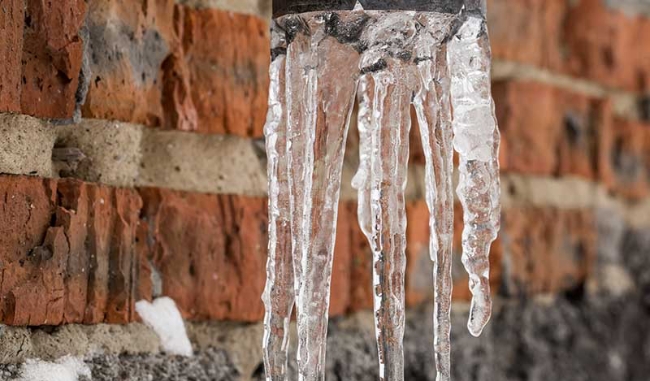This post which follows pertaining to How To Avoid Freezing Pipes is fairly stimulating. Try it and draw your own personal findings.

Winter can damage your pipes, especially by freezing pipelines. Right here's exactly how to prevent it from occurring and what to do if it does.
Intro
As temperatures decrease, the risk of icy pipelines increases, possibly bring about costly repair services and water damages. Understanding just how to avoid icy pipelines is critical for home owners in cool environments.
Avoidance Tips
Protecting susceptible pipes
Cover pipelines in insulation sleeves or utilize heat tape to secure them from freezing temperatures. Focus on pipelines in unheated or exterior locations of the home.
Home heating methods
Keep indoor spaces properly heated up, especially locations with plumbing. Open cabinet doors to permit cozy air to flow around pipes under sinks.
Exactly how to recognize icy pipes
Seek reduced water circulation from faucets, unusual smells or noises from pipelines, and noticeable frost on revealed pipelines.
Long-Term Solutions
Architectural adjustments
Consider rerouting pipelines far from outside walls or unheated locations. Include additional insulation to attics, basements, and crawl spaces.
Updating insulation
Buy premium insulation for pipes, attic rooms, and wall surfaces. Appropriate insulation helps keep constant temperatures and reduces the threat of frozen pipelines.
Protecting Exterior Plumbing
Yard pipes and outdoor taps
Disconnect and drain pipes garden pipes before wintertime. Set up frost-proof spigots or cover outside taps with insulated caps.
Recognizing Frozen Pipes
What creates pipes to freeze?
Pipes freeze when revealed to temperature levels below 32 ° F (0 ° C) for prolonged durations. As water inside the pipelines freezes, it expands, putting pressure on the pipe walls and potentially causing them to burst.
Risks and damages
Frozen pipes can lead to supply of water interruptions, property damages, and pricey fixings. Burst pipes can flooding homes and trigger substantial structural damages.
Indicators of Frozen Water Lines
Identifying icy pipes early can stop them from bursting.
What to Do If Your Pipes Freeze
Immediate actions to take
If you believe frozen pipelines, keep faucets available to ease stress as the ice thaws. Make use of a hairdryer or towels taken in hot water to thaw pipes gradually.
Conclusion
Preventing icy pipes calls for positive actions and quick responses. By comprehending the causes, indications, and safety nets, property owners can shield their plumbing during winter.
6 Proven Ways to Prevent Frozen Pipes and Protect Your Home
Disconnect and Drain Garden Hoses
Before winter arrives, start by disconnecting your garden hoses and draining any remaining water. Close the shut-off valves that supply outdoor hose bibs and leave the outdoor faucet open to allow any residual water to drain. For extra protection, consider using faucet covers throughout the colder months. It’s also important to drain water from any sprinkler supply lines following the manufacturer’s directions.
Insulate Exposed Pipes
Insulating your pipes is an effective way to prevent freezing. Pipe insulation is readily available at home improvement stores and is relatively inexpensive. Pay close attention to pipes in unheated areas such as the attic, basement, crawl spaces, or garage. Apply foam insulation generously to create a buffer against the cold. You can also wrap your pipes in heat tape or thermostat-controlled heat cables for added warmth.
Seal Air Leaks
Inspect your home for any cracks or openings that could let in cold air. Seal any holes around the piping in interior or exterior walls, as well as the sill plates where your home rests on its foundation. Additionally, make sure to keep your garage door closed unless you’re entering or exiting. Leaving it open creates a significant air leak that can lead to frozen pipes.
Allow Warm Air Circulation
During cold snaps, it’s essential to allow warm air to circulate evenly throughout your home. Leave interior doors ajar to promote better airflow. Open kitchen and bathroom cabinets to help distribute heat consistently around the rooms. If you have small children or pets, be sure to remove any household chemicals or potentially harmful cleaners from open cabinets for safety.
Let Faucets Drip
A small trickle of water can make a big difference in preventing ice formation inside your pipes. When temperatures drop significantly, start a drip of water from all faucets served by exposed pipes. This continuous flow helps prevent the water from freezing. Additionally, running a few faucets slightly can relieve pressure inside the pipes, reducing the chances of a rupture if the water inside does freeze.
https://choateshvac.com/6-proven-ways-to-prevent-frozen-pipes-and-protect-your-home/

Do you like more info about Winter Plumbing Precautions: Preventing Frozen Pipes? Create a review down below. We will be happy to find out your thinking about this entry. We are looking forward to see you back again soon. Are you aware of anybody else who is serious about the subject? Do not hesitate to promote it. Thank you so much for taking the time to read it.
Browse Website